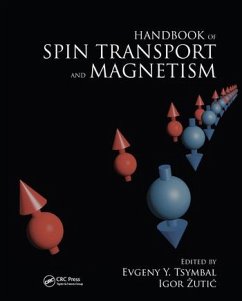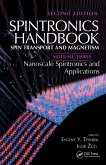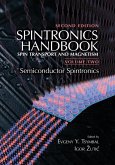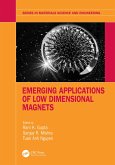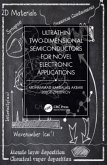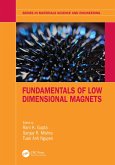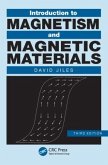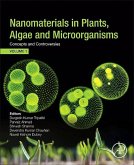In the past several decades, the research on spin transport and magnetism has led to remarkable scientific and technological breakthroughs, including Albert Fert and Peter Grünberg's Nobel Prize-winning discovery of giant magnetoresistance (GMR) in magnetic metallic multilayers. Handbook of Spin Transport and Magnetism provides a comprehensive, balanced account of the state of the art in the field known as spin electronics or spintronics. It reveals how key phenomena first discovered in one class of materials, such as spin injection in metals, have been revisited decades later in other materials systems, including silicon, organic semiconductors, carbon nanotubes, graphene, and carefully engineered nanostructures.
The first section of the book offers a historical and personal perspective of the field written by Nobel Prize laureate Albert Fert. The second section addresses physical phenomena, such as GMR, in hybrid structures of ferromagnetic and normal metals. The third section discusses recent developments in spin-dependent tunneling, including magnetic tunnel junctions with ferroelectric barriers. In the fourth section, the contributors look at how to control spin and magnetism in semiconductors. In the fifth section, they examine phenomena typically found in nanostructures made from metals, superconductors, molecular magnets, carbon nanotubes, quantum dots, and graphene. The final section covers novel spin-based applications, including advanced magnetic sensors, nonvolatile magnetoresistive random access memory, and semiconductor spin-lasers.
The techniques and materials of spintronics have rapidly evolved in recent years, leading to vast improvements in hard drive storage and magnetic sensing. With extensive cross-references between chapters, this seminal handbook provides a complete guide to spin transport and magnetism across various classes of materials and structures.
Hinweis: Dieser Artikel kann nur an eine deutsche Lieferadresse ausgeliefert werden.
The first section of the book offers a historical and personal perspective of the field written by Nobel Prize laureate Albert Fert. The second section addresses physical phenomena, such as GMR, in hybrid structures of ferromagnetic and normal metals. The third section discusses recent developments in spin-dependent tunneling, including magnetic tunnel junctions with ferroelectric barriers. In the fourth section, the contributors look at how to control spin and magnetism in semiconductors. In the fifth section, they examine phenomena typically found in nanostructures made from metals, superconductors, molecular magnets, carbon nanotubes, quantum dots, and graphene. The final section covers novel spin-based applications, including advanced magnetic sensors, nonvolatile magnetoresistive random access memory, and semiconductor spin-lasers.
The techniques and materials of spintronics have rapidly evolved in recent years, leading to vast improvements in hard drive storage and magnetic sensing. With extensive cross-references between chapters, this seminal handbook provides a complete guide to spin transport and magnetism across various classes of materials and structures.
Hinweis: Dieser Artikel kann nur an eine deutsche Lieferadresse ausgeliefert werden.
This handbook is a timely, up-to-date review of the intricate relationship between both carrier and spin transport and magnetism in semiconductors and metals. The chapters are written by leading experts and will undoubtedly serve as a valuable reference for all workers in the field of spintronics.
-Professor Stephan von Molnár, Florida State University
[It] provides a wide perspective on spin-polarized electron transport in the bulk of solids, at interfaces, and in microstructures ... a highly useful source for researchers, engineers, and students working in this fascinating and technologically important field.
-Emmanuel Rashba, Harvard University
-Professor Stephan von Molnár, Florida State University
[It] provides a wide perspective on spin-polarized electron transport in the bulk of solids, at interfaces, and in microstructures ... a highly useful source for researchers, engineers, and students working in this fascinating and technologically important field.
-Emmanuel Rashba, Harvard University

